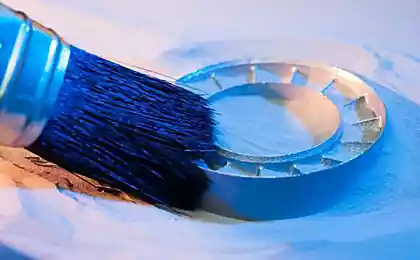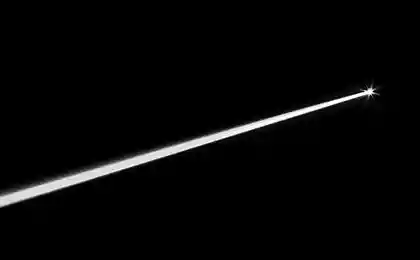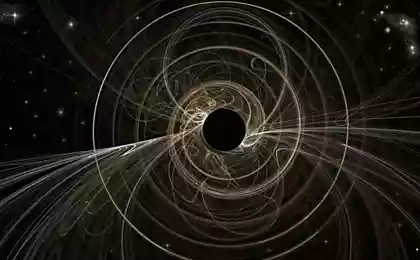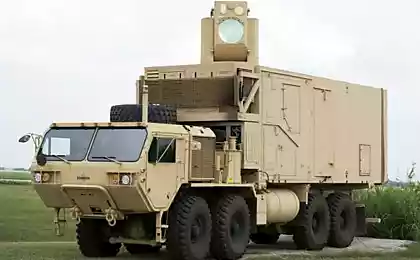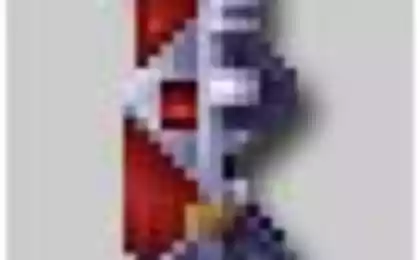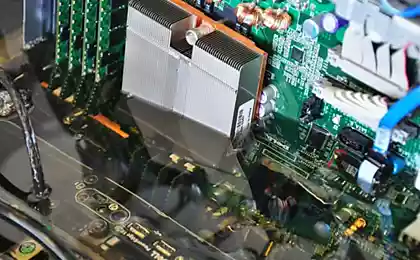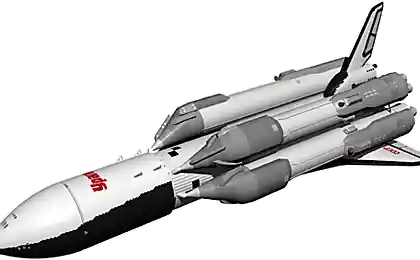728
Physics of the University of Washington used a laser as a liquid cooler
Welcome to the pages of the blog iCover ! In the view of many, the laser - only source of concentrated heat. Trying to dispel this misconception of physics at the University of Washington have demonstrated a laser that can be used as liquid coolant in the real world. The fact of the result achieved in the art and what are the prospects, according to the group pulls the proposed method will be discussed in our current publications.
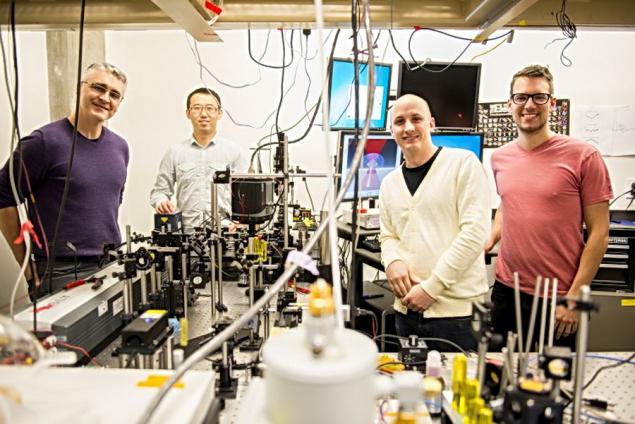
The vast majority are not prepared audience perceives as a directional laser beam source of thermal energy, which is able to cope very well with the role of the working tool, deterrent opponent or used, for example, as a surgical tool. Hard to imagine that a concentrated laser beam with certain parameters of the radiation under certain conditions, can not only cut and incinerate, and cool down. The fact that a similar effect can be played not only in a vacuum, but also in water or other liquid was able to prove in their experiments, a group of physicists from the University of Washington under the direction of Peter Pauzovskogo ( Peter J. Pauzauskie ), associate professor of materials science and engineering university.
During the experiment, the researchers used a laser that generates light in the infrared part of the spectrum. Inside the chamber, the installation was flooded with water and placed nanocrystal used as a target and staying in the water in a suspended state. As a result, laser beam irradiation microscopic crystal begins to emit. The specifics of the experiment was that the energy released nanocrystals emitted photons exceed the absorbed energy of the photons of the infrared laser, forcing the crystal to compensate for the energy deficit caused by the energy of the thermal motion of the atoms. Crystal was cooled with cooling water and around itself. The result of the experiment was the lowering of the water temperature to 2.2ºC ( 36ºF ).
In order to accurately determine that the water is cooled down around the "target", instruments recorded position of the shadow of the weighted nanocrystal. With the loss of heat target slows down near the point of capture in an optical trap. Tracking amplitude micromotion nanocrystal scientists were able to conclude that it is cooled. The fact that the cooling of the crystal and confirmed the change of color - from blue-green - green to reddish.
In the next stage of the experiment designed by engineers laser manages in a similar way to cool the biological solution to be used as growth medium in cell and molecular genetic laboratory experiments.
Opting for infrared radiation, the authors explain the experiment, no coincidence, since one possible application purposes in case of a successful test method should be a biological object (infrared ray radiation, in contrast to the visible, does not cause cellular burn).
In its press release iccledovateli lists a number of possible options for using the proposed advanced version of the technology of laser cooling. In microelectronics, for example, a beam could be used for spot cooling components of computer chips that would prevent them from overheating and to improve processor performance.
In biology directed metered cooling of demand would be to lower the temperature of the dividing cells in order to investigate arising from this chromosomal changes. With decreasing temperature, the intensity of biological processes inevitably falls that gives scientists the ability to track the "retrospective" of the whole process in a comfortable time span. "It is important that using radiation in the spectrum offered by us, do not have to cool the whole cell is entirely at the risk of killing the tiny units of life: it will be enough to direct the beam to the desired area" - said Puazovsky.
Directed proposed laser beam of the radiation spectrum, according to scientists, could, if necessary, cool even one neuron and without damaging reduce its activity.
Production (growing) crystals, which determine the laser power, as noted in the publication, - the process is quite expensive. Crystals for lasers used in "cooling settings" Puazovskogo group may be prepared & quot; ... with much more simple, cheap, affordable and, most importantly, scalable technology hydrothermal synthesis ... & quot ;.
The limited capacity of the group have provided practical confirmation of the method, working with only one nanocrystal. In the future, scientists say, the amount of experimental data will be increased through the use of several that involves the use of high power lasers.
The feasibility of the technology is impressive, but at the same time, quite an acute problem of energy efficiency of the cooling process. And it is one of the issues over which the group has to work.

"We are interested in the ideas and proposals of scientists and representatives of other spheres of business, - said Peter Pauzovsky - to expand the scope of laser cooling liquids with a maximum benefit for mankind."
A brief report on the results of this work can be found in the press release the group on the site университета.
P. S. The technology of laser cooling in a vacuum was first demonstrated in the National Laboratory of Los Alamos (LANL) in 1995. I>
*****
Dear readers, we are always happy to meet and waiting for you on our blog. We will continue to share with you the latest news, reviews and other publications and will do everything possible to ensure that the time spent with us was useful to you. And, of course, do not forget to subscribe to our heading .
Our other articles and events
Xiaomi Mi Band. Site fitness Review Meizu M2 Mini: stylish budget- Pleasant discount for AV-receiver premium a href="http://www.icover.ru/promo/pleer-astell-kern-ak380-s-naushnikami-v-podarok/"> player Astell & Kern AK380 with headphones as a present! < /
Source: geektimes.ru/company/icover/blog/265948/

The vast majority are not prepared audience perceives as a directional laser beam source of thermal energy, which is able to cope very well with the role of the working tool, deterrent opponent or used, for example, as a surgical tool. Hard to imagine that a concentrated laser beam with certain parameters of the radiation under certain conditions, can not only cut and incinerate, and cool down. The fact that a similar effect can be played not only in a vacuum, but also in water or other liquid was able to prove in their experiments, a group of physicists from the University of Washington under the direction of Peter Pauzovskogo ( Peter J. Pauzauskie ), associate professor of materials science and engineering university.
During the experiment, the researchers used a laser that generates light in the infrared part of the spectrum. Inside the chamber, the installation was flooded with water and placed nanocrystal used as a target and staying in the water in a suspended state. As a result, laser beam irradiation microscopic crystal begins to emit. The specifics of the experiment was that the energy released nanocrystals emitted photons exceed the absorbed energy of the photons of the infrared laser, forcing the crystal to compensate for the energy deficit caused by the energy of the thermal motion of the atoms. Crystal was cooled with cooling water and around itself. The result of the experiment was the lowering of the water temperature to 2.2ºC ( 36ºF ).
In order to accurately determine that the water is cooled down around the "target", instruments recorded position of the shadow of the weighted nanocrystal. With the loss of heat target slows down near the point of capture in an optical trap. Tracking amplitude micromotion nanocrystal scientists were able to conclude that it is cooled. The fact that the cooling of the crystal and confirmed the change of color - from blue-green - green to reddish.
In the next stage of the experiment designed by engineers laser manages in a similar way to cool the biological solution to be used as growth medium in cell and molecular genetic laboratory experiments.
Opting for infrared radiation, the authors explain the experiment, no coincidence, since one possible application purposes in case of a successful test method should be a biological object (infrared ray radiation, in contrast to the visible, does not cause cellular burn).
In its press release iccledovateli lists a number of possible options for using the proposed advanced version of the technology of laser cooling. In microelectronics, for example, a beam could be used for spot cooling components of computer chips that would prevent them from overheating and to improve processor performance.
In biology directed metered cooling of demand would be to lower the temperature of the dividing cells in order to investigate arising from this chromosomal changes. With decreasing temperature, the intensity of biological processes inevitably falls that gives scientists the ability to track the "retrospective" of the whole process in a comfortable time span. "It is important that using radiation in the spectrum offered by us, do not have to cool the whole cell is entirely at the risk of killing the tiny units of life: it will be enough to direct the beam to the desired area" - said Puazovsky.
Directed proposed laser beam of the radiation spectrum, according to scientists, could, if necessary, cool even one neuron and without damaging reduce its activity.
Production (growing) crystals, which determine the laser power, as noted in the publication, - the process is quite expensive. Crystals for lasers used in "cooling settings" Puazovskogo group may be prepared & quot; ... with much more simple, cheap, affordable and, most importantly, scalable technology hydrothermal synthesis ... & quot ;.
The limited capacity of the group have provided practical confirmation of the method, working with only one nanocrystal. In the future, scientists say, the amount of experimental data will be increased through the use of several that involves the use of high power lasers.
The feasibility of the technology is impressive, but at the same time, quite an acute problem of energy efficiency of the cooling process. And it is one of the issues over which the group has to work.

"We are interested in the ideas and proposals of scientists and representatives of other spheres of business, - said Peter Pauzovsky - to expand the scope of laser cooling liquids with a maximum benefit for mankind."
A brief report on the results of this work can be found in the press release the group on the site университета.
P. S. The technology of laser cooling in a vacuum was first demonstrated in the National Laboratory of Los Alamos (LANL) in 1995. I>
*****
Dear readers, we are always happy to meet and waiting for you on our blog. We will continue to share with you the latest news, reviews and other publications and will do everything possible to ensure that the time spent with us was useful to you. And, of course, do not forget to subscribe to our heading .
Our other articles and events
Xiaomi Mi Band. Site fitness Review Meizu M2 Mini: stylish budget- Pleasant discount for AV-receiver premium a href="http://www.icover.ru/promo/pleer-astell-kern-ak380-s-naushnikami-v-podarok/"> player Astell & Kern AK380 with headphones as a present! < /
Source: geektimes.ru/company/icover/blog/265948/
Copter in a backpack - assembly based on the frame Predator 650
Colombia and South America through the eyes of an engineer

